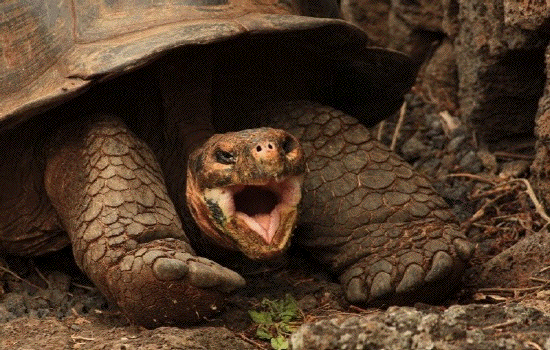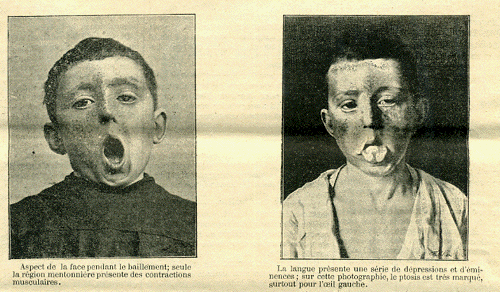
Samedi 1 octobre 2011
la lettre d'information du site baillement.com N°102 Si vous ne voyez pas les images, cliquez ici pour lire cette lettre dans votre navigateur. If you cannot see pictures below, to view the email in your web browser click here baillement.com est libre d'accès, base documentaire pour comprendre, chercher, travailler
-
No evidence of contagious yawning - in the red-footed tortoise
- Wilkinson A, Sebanz N, Mand I, Huber L
- CURRENT ZOOLOGY
- (formerly ACTA ZOOLOGICA SINICA)
- 2011;57(4):477-484
- Department of Cognitive Biology, University of Vienna, Austria
- Department of Biological Sciences, University of Lincoln, Lincoln, Donders UK
- Institute for Brain, Cognition and Behavior, Centre for Cognition, Radboud, University Nijmegen,
- The Netherlands
- Echokinésie du bâillement,
- théorie de l'esprit et empathie
- Echokinetic yawning,
- theory of mind, and empathy
-
Tortoises do not yawn in a "contagious" manner - Three hypotheses have attempted to explain the phenomenon of contagious yawning. It has been hypothesized that it is a fixed action pattern for which the releasing stimulus is the observation of another yawn, that it is the result of non-conscious mimicry emerging through close links between perception and action or that it is the result of empathy, involving the ability to engage in mental state attribution. This set of experiments sought to distinguish between these hypotheses by examining contagious yawning in a species that is unlikely to show nonconscious mimicry and empathy but does respond to social stimuli: the red-footed tortoise Geochelone carbonaria.
- A demonstrator tortoise was conditioned to yawn when presented with a red square-shaped stimulus. Observer tortoises were exposed to three conditions: observation of conditioned yawn, non demonstration control, and stimulus only control. We measured the number of yawns for each observer animal in each condition. There was no difference between conditions. Experiment 2 therefore increased the number of conditioned yawns presented. Again, there was no significant difference between conditions. It seemed plausible that the tortoises did not view the conditioned yawn as a real yawn and therefore a fmal experiment was run using video recorded stimuli. The observer tortoises were presented with three conditions: real yawn, conditioned yawns and empty background. Again there was no significant difference between conditions. The authors therefore conclude that the red-footed tortoise does not yawn in response to observing a conspecific yawn. This suggests that contagious yawning is not the result of a fixed action pattern but may involve more complex social processes

- Les tortues ne bâillent pas de façon "contagieuse"
- Trois hypothèses ont été émises afin d'expliquer le phénomène de contagion ou réplication du bâillement. Il a été envisagé que :
- - ce comportement stéréotypé était déclenché par la vue d'un autre bâillant
- - qu'il résultait d'une imitation involontaire émergeant du lien étroit qui existe entre action-perception,
- - qu'il était le résultat d'empathie, engageant la capacité à attribuer un état mental à l'autre.
- Une série d'expériences a
cherché à tester ces hypothèses avec
une espèce animale pour laquelle il est admis
qu'elle n'a pas de capacité d'imitation
involontaire, la tortue à pattes rouges Geochelone
carbonaria.
Les auteurs en ont conclu à l'incapacité des tortues à bâiller à la vue d'une autre tortue bâillant. Un processus socio-cogniitif plus élaboré qu'une simple imitation visuelle semble donc nécessaire.
-
Yawning: An Opening into Empathy? - Great Apes' Understanding of Other Individuals' Line of Sight
- Okamoto-Barth S, Call J, Tomasello M
- Psychological Science
- 2007;18(5):462-468
- Chimpanzees know that others make inferences.
- Schmelz M, Call J, Tomasello M.
- Proc Natl Acad Sci U S A.
- 2011;108(7):3077-3079
-
Perspective-taking skills, including understanding of the referential nature of gaze direction, may have gradually increased in the evolutionary lineage leading to bonobos, chimpanzees, and humans. - Some studies have detected differences between chimpanzees and bonobos, on the one hand, and gorillas and orangutans, on the other, without the participation of humans. For instance, chimpanzees and bonobos show greater sensitivity than the other apes in adjusting gesture modality (visual vs. tactile) to the attentional state of the recipient (Call & Tomasello). Chimpanzees also show social contagion; that is, they increase yawning after watching movies of conspecifics yawning (Anderson, Myowa-Yamakoshi, & Matsuzawa, 2004). Anderson et al. (2004) have suggested that this social contagion may be related to some form of empathic responses. Arguably, greater attention to other individuals in general, not just to humans, among chimpanzees and bonobos could still explain our results. However, under this hypothesis, it is unclear why all four species followed gaze at comparable levels, differing only in how they deployed their attention to various locations. Thus, their working hypothesis is that bonobos and chimpanzees, who live in the most complex ape societies (with fission-fusion organization), may have evolved more sophisticated social-cognitive skills of perspective taking than the other great apes.

- Y-a-t-il un lien entre capacité à suivre un regard et la contagion du bâillement ?
- Les chimpanzés manifestent une contagion sociale, comme par exemple une sensibilité à la contagion - réplication du bâillement. Cette faculté révèle une capacité d'empathie. Ce travail montre que chimpanzés et bonobos sont capables de suivre un regard et de déployer leur attention vers où ce regard se porte comme les humains en sont capables alors que les gorilles et les orangs-outangs ne le sont pas. Le fait de vivre en société aux relations interindividuelles complexes, pour les premiers, explique peut-être cette différence.
-
5-HT6 pharmacology inconsistencies - Borsini F, Bordi F, Riccioni T
- Pharmcol Biochem Behav
- 2011;98: 169-172
- Determination of the role of the 5-ht6 receptor in the rat brain: a study using antisense oligonucleotides
- Bourson A, Borroni E, Austin RH,
- Monsma FJ, Sleight AJ.
- J Pharmacol Exp Ther.
- 1995;274(1):173-180
- Characterization of Ro 04-6790 and Ro 63-0563: potent and selective antagonists at human and rat 5-HT6 receptors.
- Sleight AJ, Boess FG, Bös M, Levet-Trafit B, Riemer C, Bourson A.
- Br J Pharmacol.
- 1998;124(3):556-562
-
Yawning, stretching and the 5-HT receptors - A particular behavior syndrome (yawning, stretching and chewing) resulting from blockade of 5-HT5 receptors was characterized by Bourson et al. (1995). Lacking selective 5-HT6 receptor antagonists, Bourson et al. (1995) utilized 5-HT antisense oligonucleotides (AO) complementary to bases into 18 of the rat 5-HT6 cDNA.
- After intracerebroventricular oligonucleotide administration twice a day at 6 or 12 pg/rat for four days, AO-treated animals displayed a dose-dependent specific behavioral syndrome consisting of yawning, stretching and chewing 16 h after the final treatment, which continued for the following 7-8 days. This syndrome was dose-dependently attenuated by the antimuscarinic compound atropine, but unaffected by the dopamine antagonist haloperidol.
-
serotonin 5-HT5 receptors - receptor
and neurotransmitter
reviews
- Un comportement particulier résultant du blocage des récepteurs 5-HT5 à la sérotonine (bâiller, s'étirer, mâchonner) avait été individualisé en 1995 par Bourson et al. Ne disposant pas de d'antagonistes sélectifs des récepteurs 5-HT6, Bourson et al. avaient utilisé des antisenses oligonucléotidiques 5-HT, complémentaires à 18 bases du cDNA 5-HT6 de rat.
- Après injections dans les ventricules cérébraux de cet oligonucléotide, deux fois par jour pendant 4 jours à la dose de 6 ou 12 pg/rat, les animaux traités exhibent un comportement spécifique fait de bâillement, étirements, mâchonnements apparaissant 16 h après la fin des injections et persistant pendant 7 à 8 jours.
- Ce syndrome est atténué de façon dose dépendante par l'atropine (anti-muscarinique, mais non modifié par l'halopéridol (antagoniste dopaminergique) .
-
Diplégie faciale totale avec paralysie glosso-laryngo-cervicale chez deux frères - Edouard Brissaud, Pierre Marie
- Le Bulletin Médical
- 1893;7(96):1081-1084
- Mouvements involontaires dans les membres paralysés
- Pierre Marie et André Léri 1911
- Edouard Brissaud
- Pierre Marie
- syndrome operculaire
- syndrome de Foix-Chavany-Marie
- Dissociated preservation of automatic-voluntary jaw movements in a patient with biopercular and unilateral pontine infarcts
- Ghika J, Vingerhoets F, Bogousslavsky J
- Eur Neurol
- 2003;50:185-188
-
Diplégie faciale totale avec paralysie glosso-laryngo-cervicale 1893 
- Aspect de la face pendant le bâillement
-
Yawning Baby - 1931 NYC.
-
Autres documents mis en ligne ce mois-ci :
- Why do we yawn ? past and current hypotheses Walusinski O
- Contagious yawning and seasonal climate variation. Gallup AC, Eldakar OT.
- Born to yawn? Cortisol linked to yawning: A new hypothesis. Thompson SBN
- Is high frequency yawning: A behavioural event of ethanol withdrawal. Chakradhara Rao US, Suresh Kumar S.
- 27 septembre 2011 Ictal yawning in a patient with drug-resistant focal epilepsy: Video/EEG documentation and review of literature reports. Specchio N, Carotenuto A et al.
Résultats du sondageau 30 septembre 2011 Recherche par mot du site
-
Nombre de questionnaires remplis : 5617 - Combien de fois bâillez-vous par jour ? <5 = 23,4%.. 5-10 = 23,2%.. 10-15 = 15,4%.. 15-20 = 10,5%.. >20 = 27,6%
- Ressentez-vous des baillements excessifs ?
- 54,3% = non, tant mieux
- 35,7% = oui et je ne sais pas pouquoi
- 8,8% = oui et je prends des antidépresseurs
- 1,0% = oui et je prends des anti-épileptiques
- 6 % = oui et je prends d'autres médicaments
- 2,3% = oui et j 'ai des troubles neurologiques
- 2,3% = oui et j 'ai des troubles hormonaux
- 1,5% = oui et j 'ai des tics moteurs
- 1,6% = oui et j 'ai des tocs
- déclenchez-vous facilement le bâillement d'autrui ? 74,7%
- êtes-vous sensible au bâillement d'autrui ? 69,6%
- William James
- The Principles of Psychology
- 1890
- Instinctive reactions and emotional expressions shade imperceptibly into each other. Every object that excites an instinct excites an emotion as well.
- Des réactions instinctives et des expressions émotionnelles interfèrent imperceptiblement l'une avec l'autre. Chaque évènement qui excite un instinct engendre une émotion aussi.
baillement.com baillement.info yawning.info écrits et réalisés par le Dr Walusinski
lire les lettres précédentes d'information du site tapez votre email - give your email pour ne plus recevoir cette lettre - to unsubscribe to the website's letter:


